Les nuées sont des vagabonds qui dérivent
Yann Stéphane Bisso __9.10–6.12.25
preview
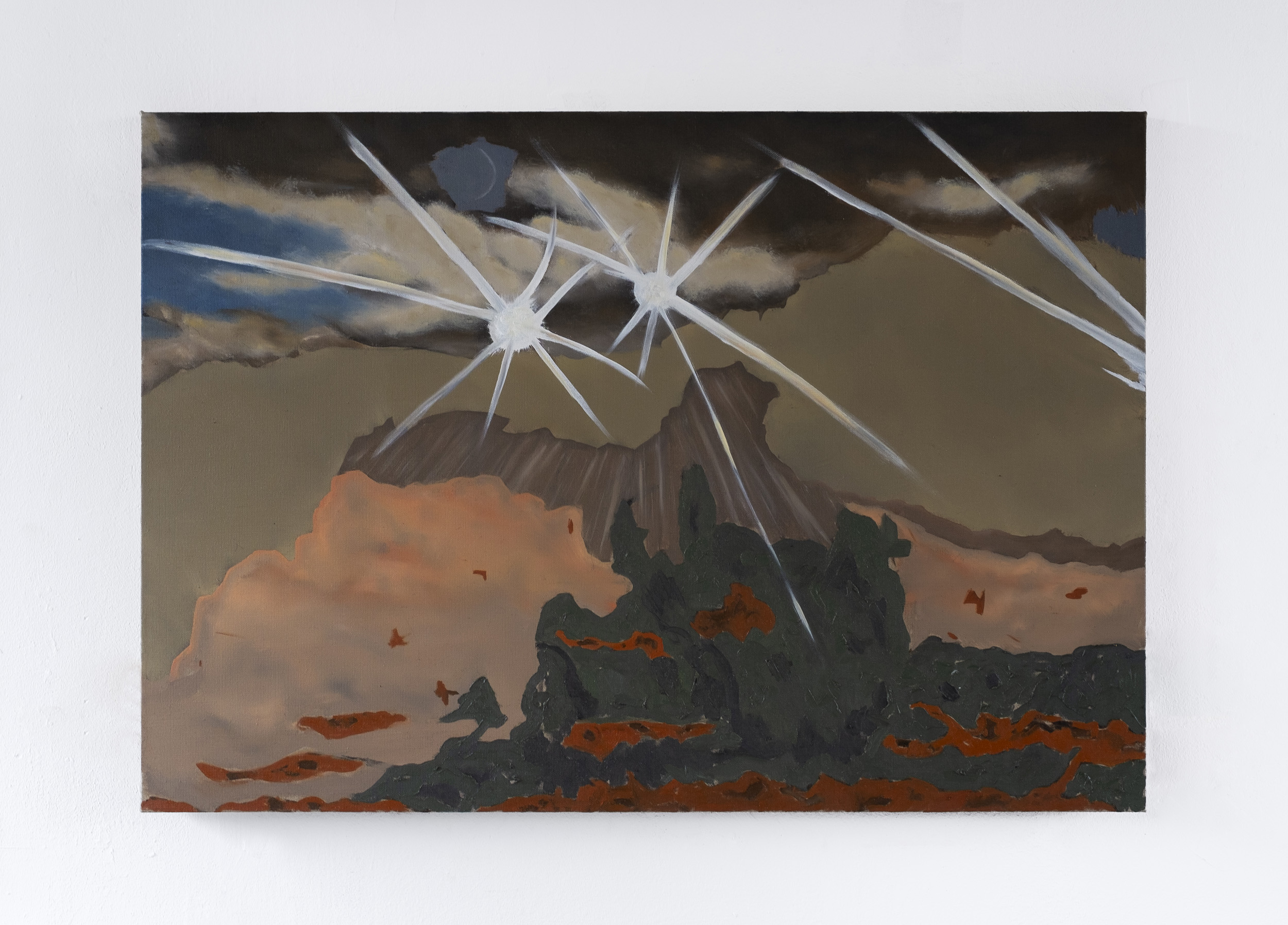
Yann Stéphane Bisso,
Des attentions flottantes, 2025
Oil on canvas
70 x 100 cm
info&price
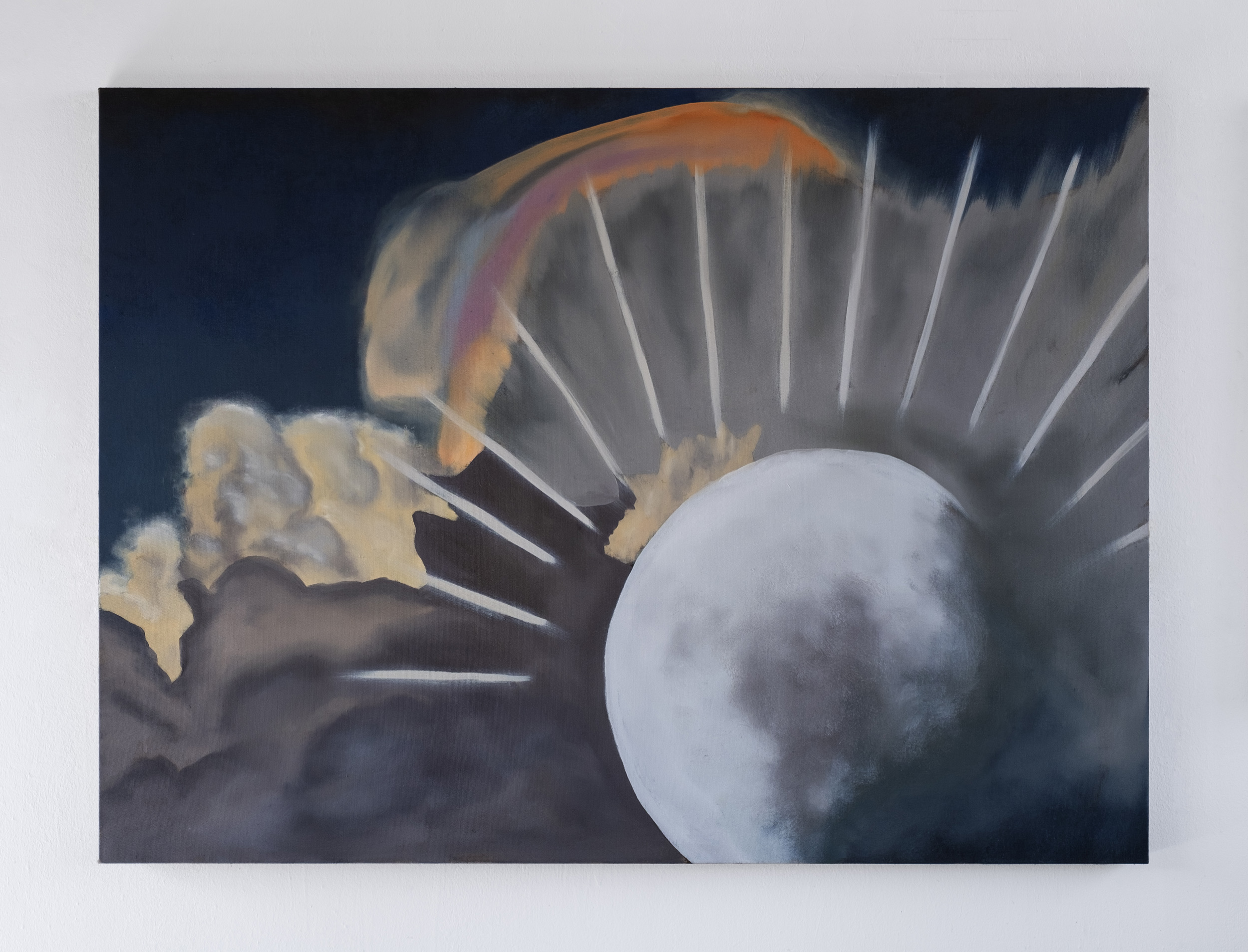
Yann Stéphane Bisso,
Lune bleue, 2025
Oil on canvas
108 x 144 cm
info&price
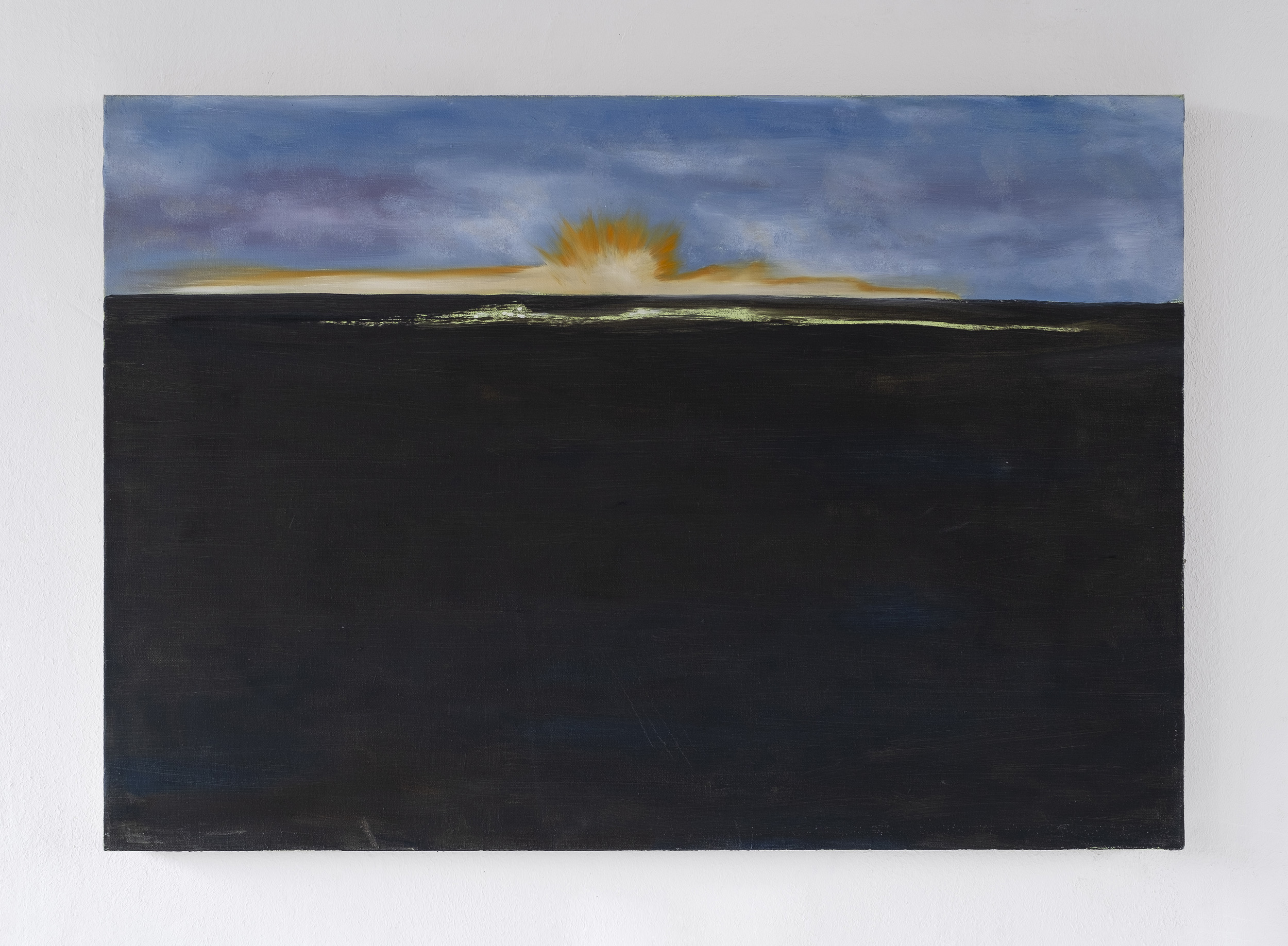
Yann Stéphane Bisso,
Bottomless pit, 2025
Oil on canvas
50 x 70 cm
info&price
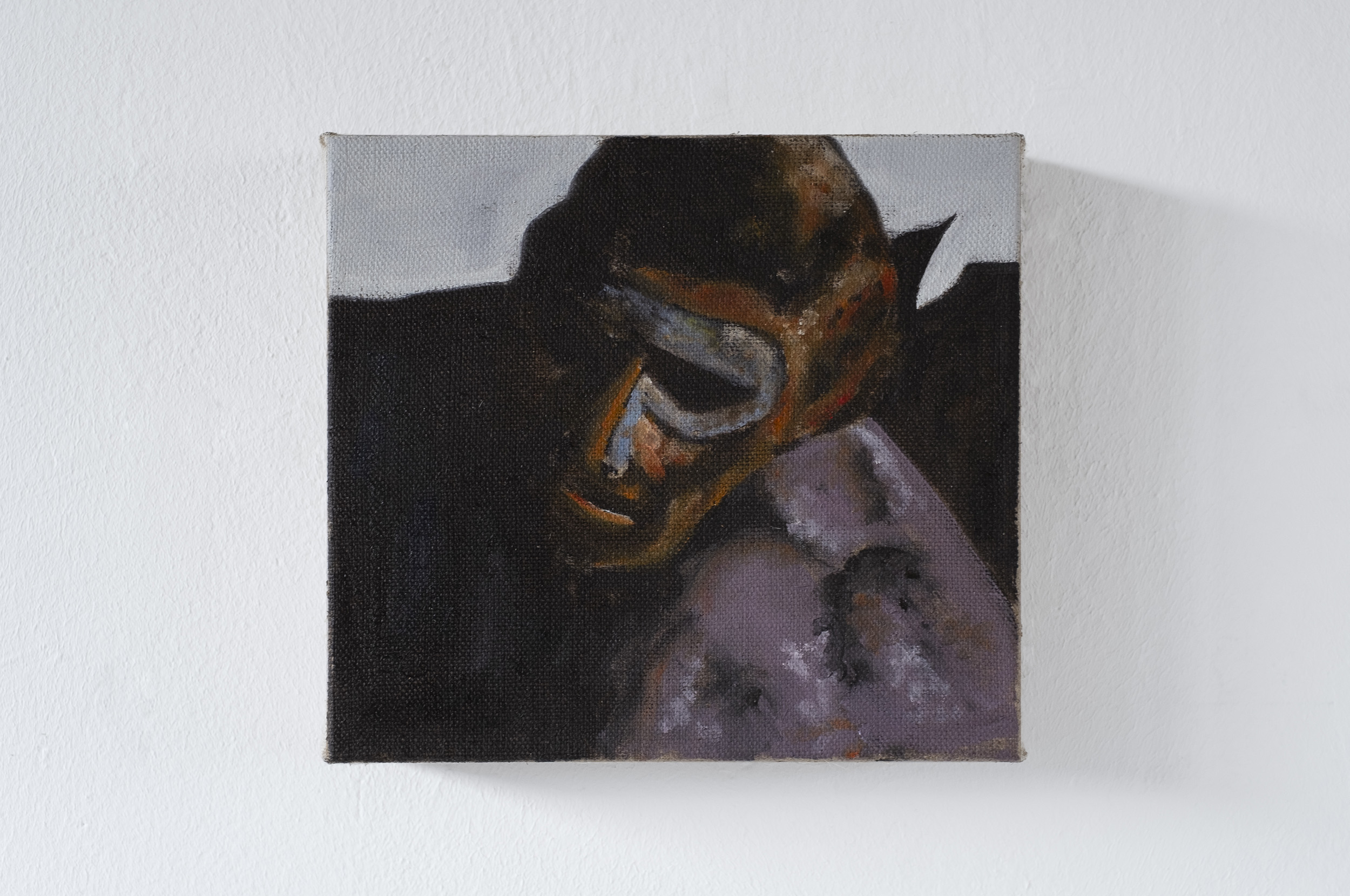
Yann Stéphane Bisso,
Cranberry figure, 2025
Oil on canvas
18 x 20 cm
info&price
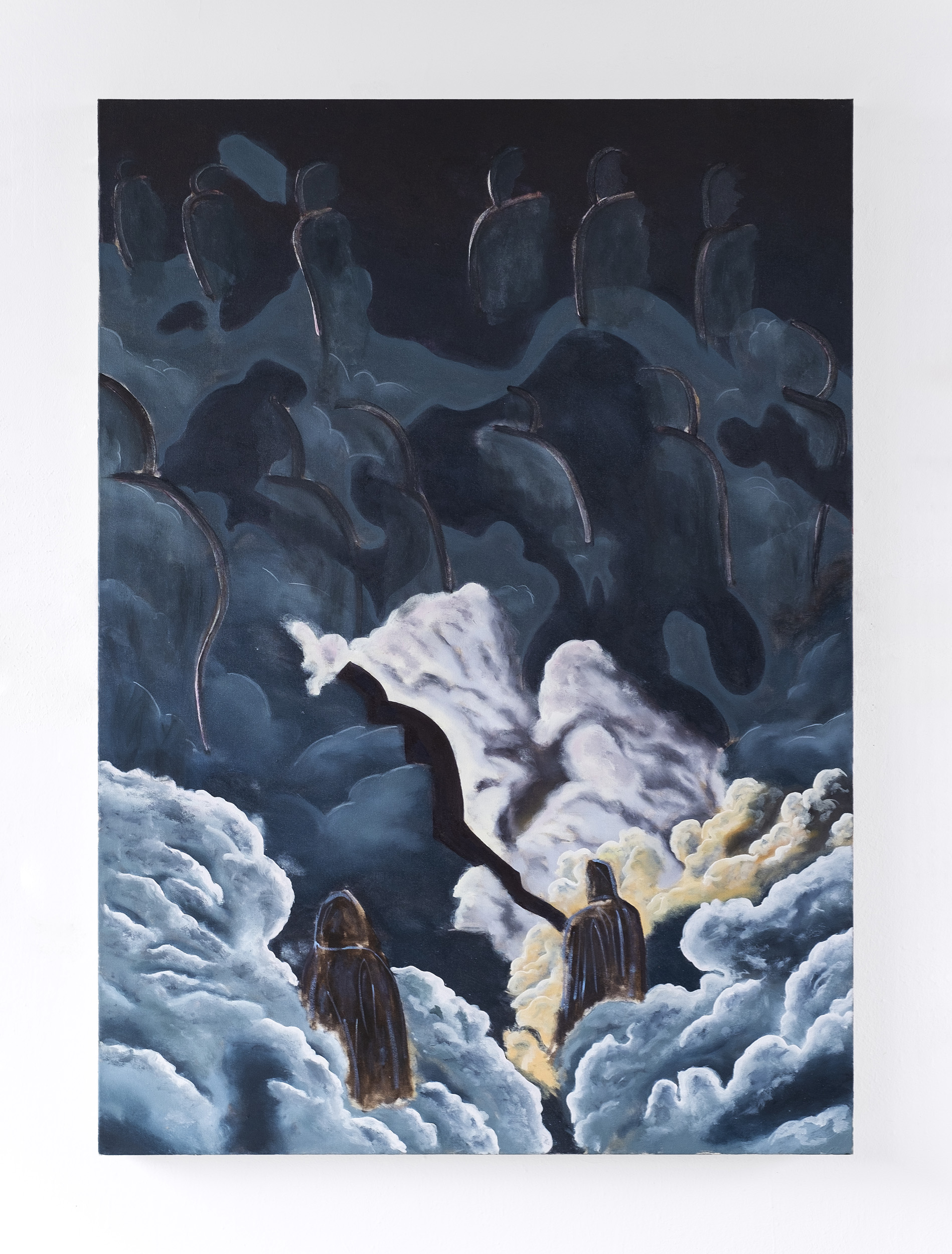
Yann Stéphane Bisso,
Domino, 2025
Oil on canvas
119 x 84 cm
info&price
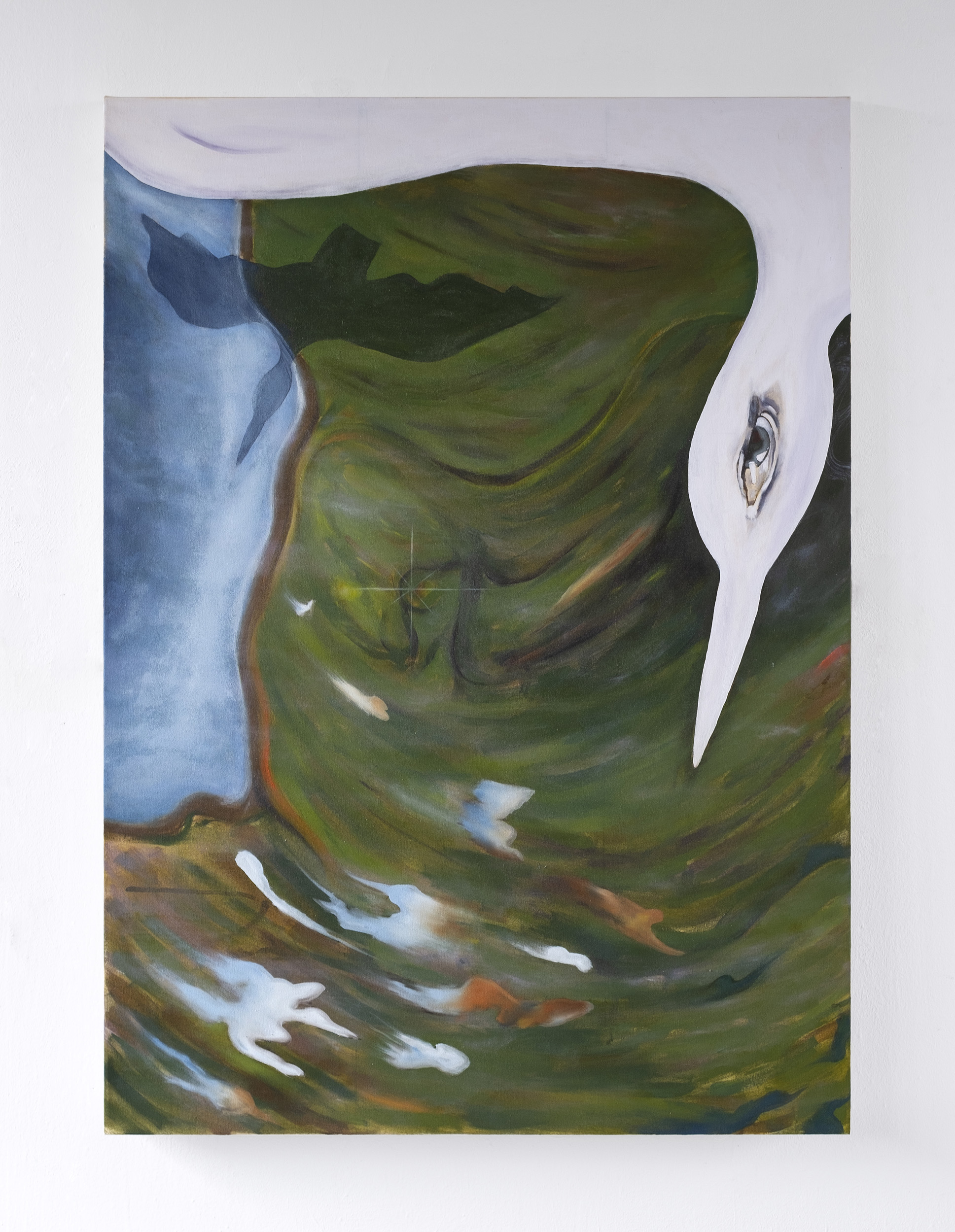
Yann Stéphane Bisso,
Comme elle vient II, 2025
Oil on canvas
119 x 84 cm
info&price
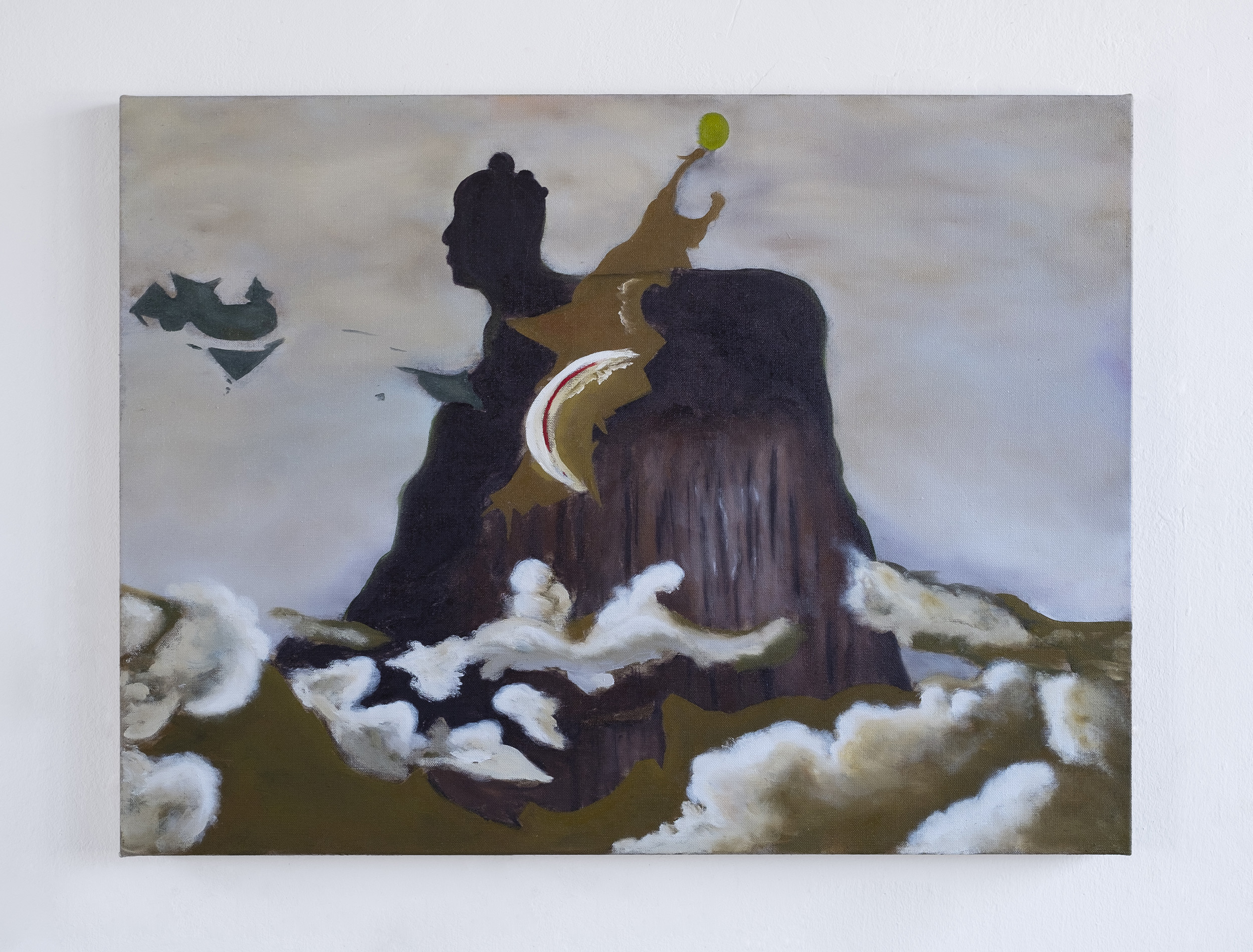
Yann Stéphane Bisso,
In some far off place, I’ll wait for you, 2025
Oil on canvas
60 x 80 cm
info&price
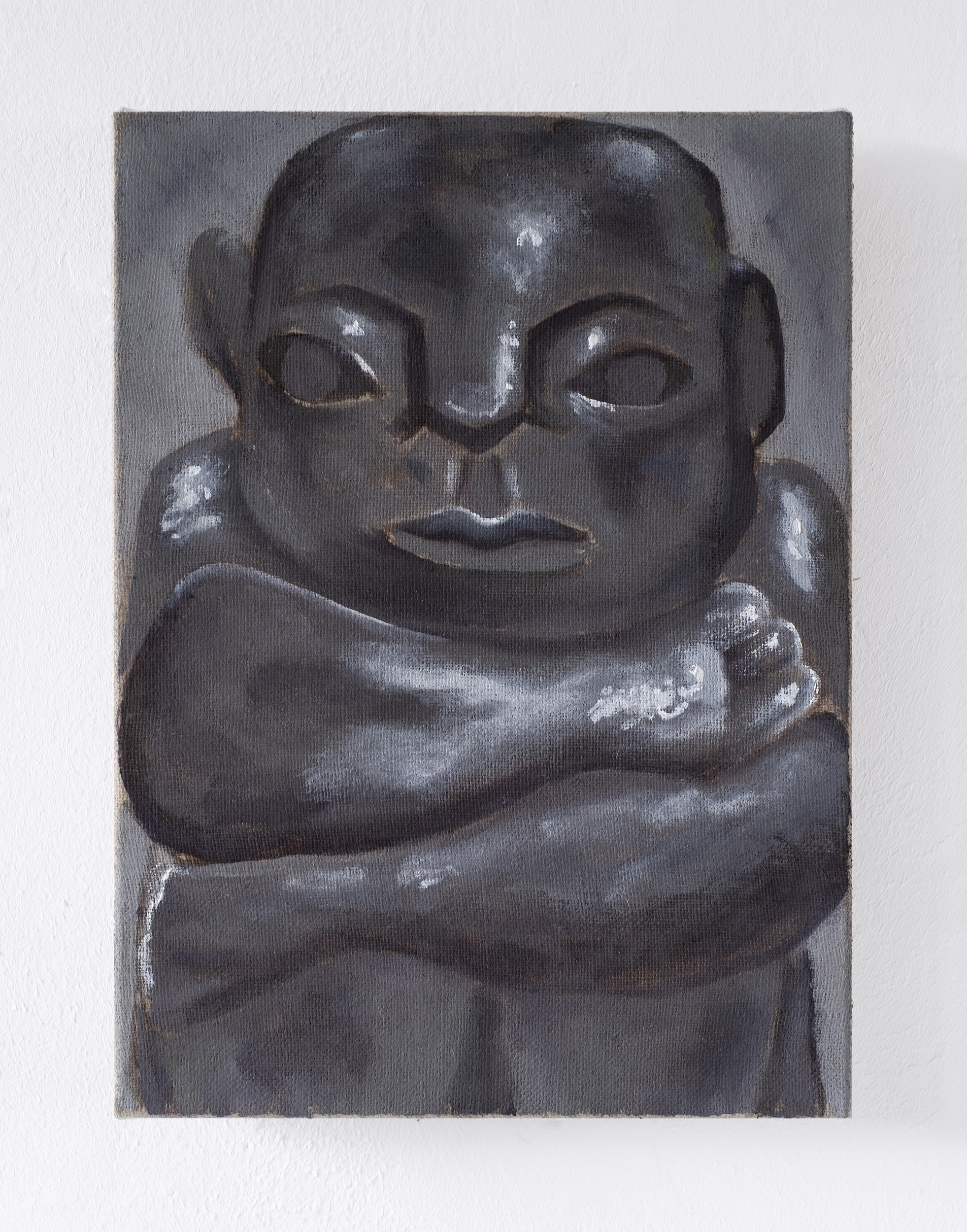
Yann Stéphane Bisso,
Sans titre, 2025
Oil on canvas
33 x 24 cm
info&price
*English below*
FR.
Le premier tableau que j’ai aimé de Yann représentait une nuée d’oiseaux noirs sur un ciel bleu taché
de nuages. Il s’appelait Autobahn (2024), ‘autoroute’ en langue allemande, et était comme une porte
ouverte sur le vol, serré et groupé, des migrateurs qui l’habitaient. Le ciel est un élément central dans
les compositions de Yann. Ses formats paysages se mettent d’ailleurs à son service. Il s’y passe des
aberrations comme des irrévérences, des tumultes et des soleils incandescents. Le ciel est une fenêtre
sur le rêve et l’ailleurs. Des jours s’y couchent, des divinités s’y cachent et des grands déplacements s’y
opèrent. Des symboles s’y emboîtent comme autant de morceaux d’une histoire.
‘Les nuées sont des vagabonds qui dérivent’. Au téléphone, Yann me parle du titre de son exposition
en pesant chaque mot. Les ‘nuées’ sont ces groupes d’oiseaux. Elles viennent en premier car elles
racontent l’aventure migratoire collective et non celle isolée d’un individu. Elles sont malgré tout des
‘vagabonds’, des figures anonymes ou fugitives sur lesquelles on projette sans savoir nos fantasmes
ou nos idées communes. On voit bien ce que l’on veut à la fin. Et finalement elles dérivent. La dérive,
c’est le cœur dans le travail de Yann. Elle est poétique. Elle parle de hasard et d’aléatoire. ‘Regarde,
c’est le printemps qui arrive’ on dit souvent au passage dans le ciel d’une formation d’oiseaux. C’est
l’avènement, l’imminence. Vers plus de chaud, de plus de froid. Ce qui intéresse Yann dans la peinture,
c’est justement ce moment de tempête où l’oiseau plonge, les corps se lèvent, les nuages se forment.
D’où ils viennent, où ils vont, on ne le sait pas.
Les peintures de Yann nous parlent de ce seuil. Ces tableaux sont moins des fenêtres que des passages.
Il y a un avant et un après. Beaucoup d’éléments ou d’incarnations y déposent leurs ombres comme
autant de traces fixées par la lumière, d’absences ou de trous dans l’histoire. Sa peinture donc est
habitée par des nuées de fantômes. Je les vois en mouvement, en joie et en dialogue aussi. Ils vivent
des aventures initiatrices, des histoires d’amour, d’érotismes, d’héritages ou de créatures fantastiques.
Ils incarnent les ancêtres. Ils font vœu de transmission.
– Elisa Rigoulet, octobre 2025
EN.
The first painting by Yann that I loved depicted a flock of black birds on a blue sky dotted with clouds.
It was called Autobahn (2024), meaning “highway” in German, and was like an open door onto the
tight, clustered flight of the migratory birds that inhabited it. The sky is a central element in Yann’s
compositions. His landscape formats serve this purpose well. They are filled with aberrations and
irreverence, turmoil and incandescent suns. The sky is a window upon dreams and other worlds. Days
set there, divinities hide there, and great journeys take place there. Symbols fit together like pieces of
a story.
“Les nuées sont des vagabonds qui dérivent”. On the phone, Yann tells me about the title of his
exhibition, weighing each word carefully. The “nuées” are groups of birds. They come first because they
represent the collective migratory adventure rather than the isolated journey of an individual. They
are nonetheless “vagabonds” (wanderers), anonymous or fleeting figures onto which we project our
fantasies or shared ideas without knowing it. In the end, we see what we want to see. And ultimately,
they drift. Drifting is at the heart of Yann’s work. It is poetic. It speaks of chance and randomness.
“Look, spring is coming,” we often say when we see a formation of birds passing in the sky. It is the
advent, the imminence. Towards more heat, more cold. What interests Yann in painting is precisely
that moment of storm when the bird dives, bodies rise, clouds form. Where they come from, where
they are going, we do not know.
Yann’s paintings speak to us of this threshold. These paintings are less windows than passages. There
is a before and an after. Many elements or incarnations cast their shadows there, like traces fixed
by light, absences or holes in history. His painting is therefore inhabited by swarms of ghosts. I see
them moving, rejoicing, and also conversing. They live initiatory adventures, stories of love, eroticism,
inheritance, or fantastical creatures. They embody ancestors. They vow to pass on their legacy.
– Elisa Rigoulet, october 2025

 Yann Stéphane Bisso, Des attentions flottantes, 2025
Yann Stéphane Bisso, Des attentions flottantes, 2025 Yann Stéphane Bisso, Lune bleue, 2025
Yann Stéphane Bisso, Lune bleue, 2025 Yann Stéphane Bisso, Bottomless pit, 2025
Yann Stéphane Bisso, Bottomless pit, 2025 Yann Stéphane Bisso, Cranberry figure, 2025
Yann Stéphane Bisso, Cranberry figure, 2025 Yann Stéphane Bisso, Domino, 2025
Yann Stéphane Bisso, Domino, 2025 Yann Stéphane Bisso, Comme elle vient II, 2025
Yann Stéphane Bisso, Comme elle vient II, 2025 Yann Stéphane Bisso, In some far off place, I’ll wait for you, 2025
Yann Stéphane Bisso, In some far off place, I’ll wait for you, 2025 Yann Stéphane Bisso, Sans titre, 2025
Yann Stéphane Bisso, Sans titre, 2025